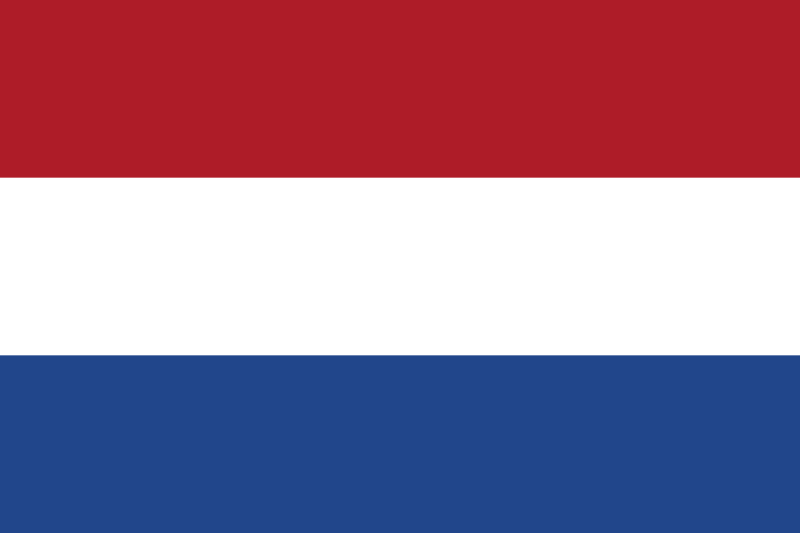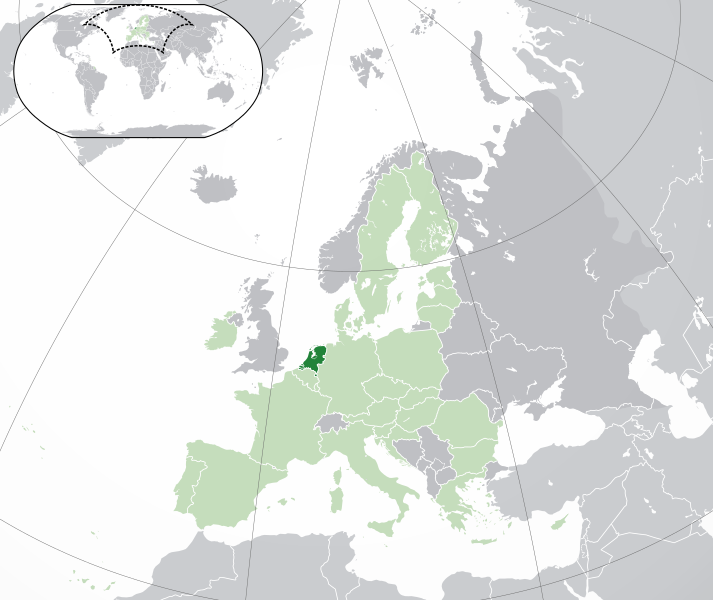 The Netherlands (pronounced /ˈnɛðɚləndz/; Dutch: Nederland, pronounced [ˈneːdərlɑnt] ) is a constituent country of the Kingdom of the Netherlands, located in North-West Europe. It is a parliamentary democratic constitutional monarchy.
The Netherlands (pronounced /ˈnɛðɚləndz/; Dutch: Nederland, pronounced [ˈneːdərlɑnt] ) is a constituent country of the Kingdom of the Netherlands, located in North-West Europe. It is a parliamentary democratic constitutional monarchy.
The Netherlands borders the North Sea to the north and west, Belgium to the south, and Germany to the east, and water borders with Denmark, Norwayand United Kingdom. The capital is Amsterdam and the seat of government is The Hague.
The Netherlands in its entirety is often referred to as Holland, although North and South Holland are actually only two of its twelve provinces.
The word Dutch is used to refer to the people, the language, and anything pertaining to the Netherlands. This lexical difference between the noun and the adjective is an attribute of the English language that does not exist in the Dutch language. The adjective ‘Dutch’ is derived from the language that was spoken in the area, called ‘Diets’, which equals Middle Dutch.
The Netherlands was one of the first parliamentary democracies. Among other affiliations the country is a founding member of the European Union (EU), NATO, OECD and WTO. With Belgium and Luxembourg it forms the Benelux economic union.
The country is host to five international courts: the Permanent Court of Arbitration, the International Court of Justice, the International Criminal Tribunal for the Former Yugoslavia, the International Criminal Court and the Special Tribunal for Lebanon.
The first four are situated in The Hague as is the EU’s criminal intelligence agency Europol and judicial co-operation agency Eurojust. This has led to the city being dubbed “the world’s legal capital”.
The Netherlands has a capitalist market-based economy, ranking 15th of 157 countries according to the Index of Economic Freedom.
The Netherlands is a geographically low-lying country, with about 20% of its area and 21% of its population located below sea level, with 50% of its land lying less than one metre above sea level. Significant land area has been gained through land reclamation and preserved through an elaborate system of polders and dikes.
Much of the Netherlands is formed by the estuary of three important European rivers, which together with their distributaries form the Rhine-Meuse-Scheldt delta. Most of the country is very flat, with the exception of foothills in the far southeast and several low-hill ranges in the central parts.

Notes from Wikipedia








